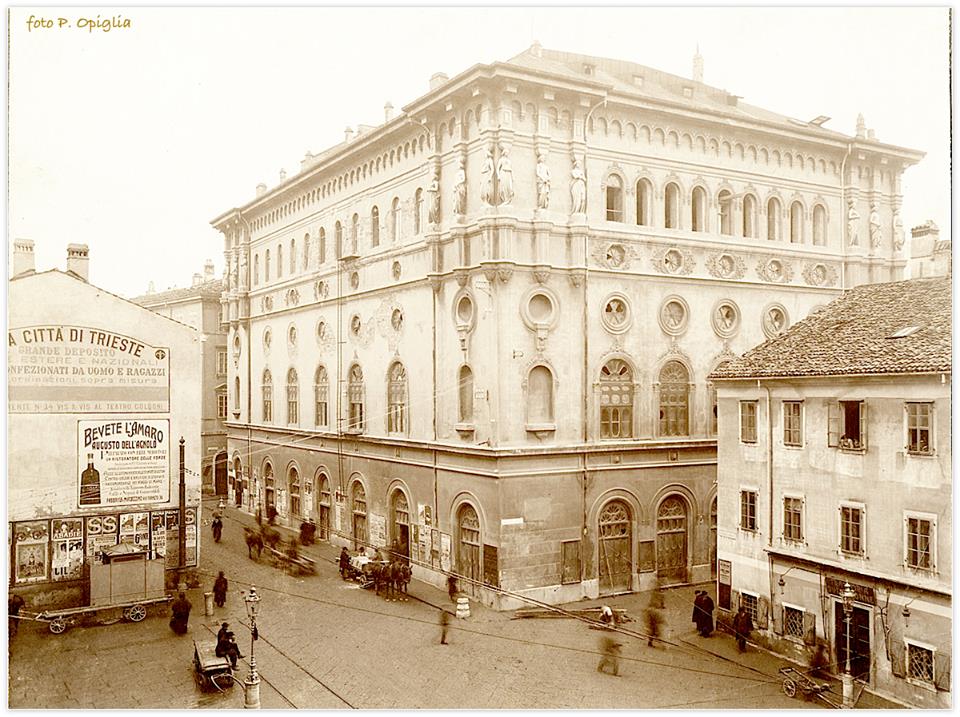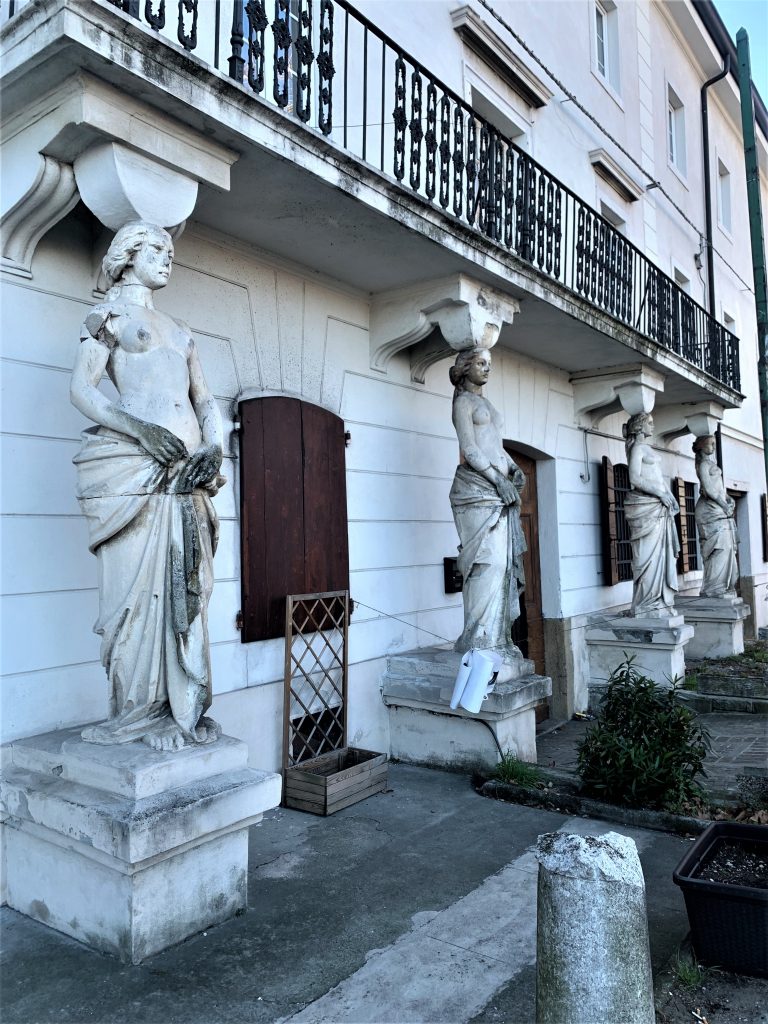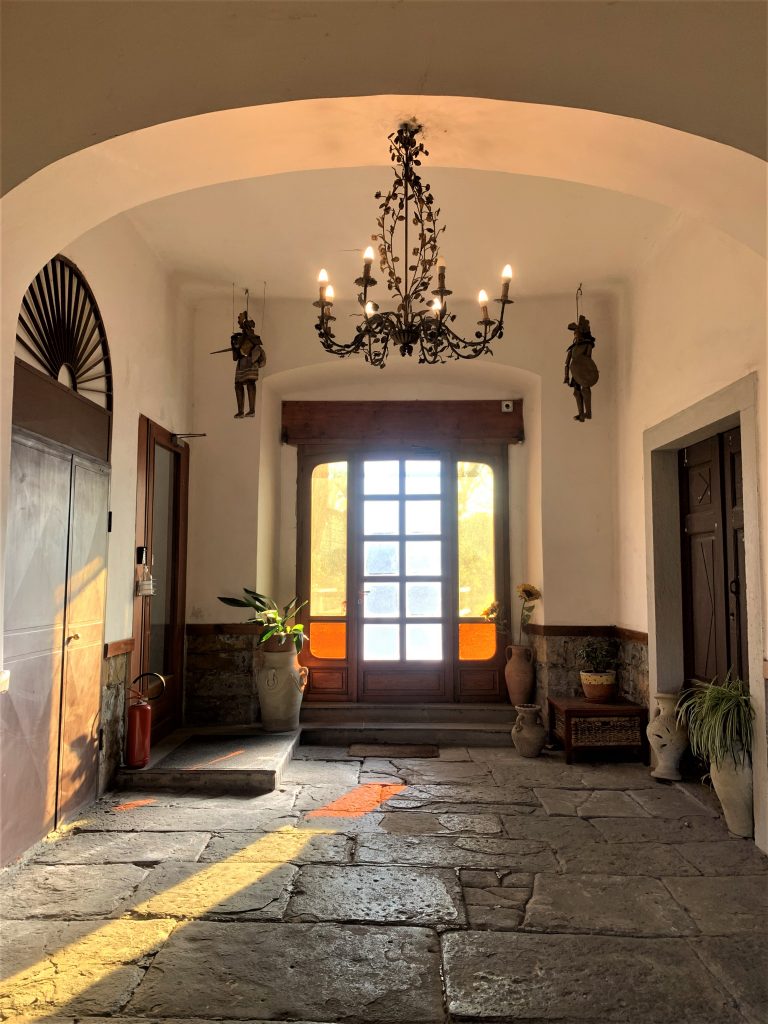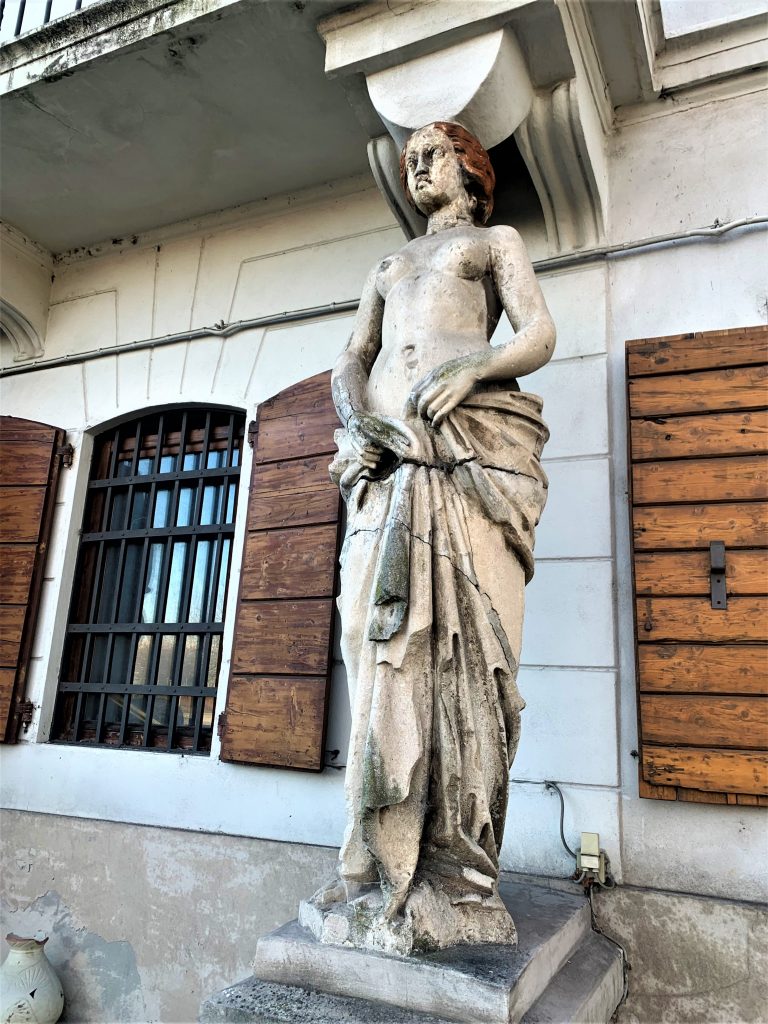words and photography: Alessandra Ressa
Along the road that leads from the city center to Montedoro, immediately past the huge shopping mall that years ago leveled down and replaced a lush green hill amidst Trieste’s indifference, an unusual building stands.
Known as Casa delle Cariatidi, it is held together by the timeless strength of four caryatids. Although it has been a familiar sight for generations of Triestini, most people do not know that the story behind these four stone ladies is very peculiar, and surprisingly old.

The statues were in origin a much appreciated decorative element of one of Trieste’s most popular theaters, Armonia, built in 1857. The theater was located in today’s Piazza Goldoni (former Piazza della Legna) at the very corner with Via Carducci, then known as Via del Torrente because of the small river which ran (and still runs) below it.
In 1902 Armonia theater changed its name into Goldoni (after Venetian playwright Carlo Goldoni). It was one of the many theaters built in that decade. Going to the theater was a favorite pastime for Triestini and there was an ever growing interest from the population from every level of society for operas, comedies, plays and every other kind of stage representation.
Financed by a group of wealthy Triestine benefactors, Baron Revoltella among them, Armonia theater was designed by a team of well-known architects and offered richly decorated facades in Lombard style.

Triestini agreed on its stunning beauty, from its arched windows to its stucco additions. However, what really caught everyone’s eye were the six statues placed at the top. Six neoclassical caryatids positioned there with the purpose of making the building stand out – and it did.
The theater was mostly popular for operas (Verdi, Bizet, Donizetti), but also served other purposes, such as hosting fancy New Year’s Eve parties. It was not uncommon to spot Austrian archduke Maximilian and his beloved wife Charlotte among the audience.
Yet its beauty and popularity did not save it from the wrecking ball. By 1907, amidst the general crisis of theaters in town, Armonia was shut down permanently. The local administration of the time, probably not too dissimilar from today’s, considered the conversion of the building to meet modern standards too expensive and decided to demolish it. Ignoring public protests and appeals, by 1912 the beautiful building was demolished.

Although a handful of objects which survived demolition can be seen at Trieste’s Civico Museo Teatrale Carlo Schmidl, the only real symbolic elements of the theater remain today the decorative caryatids.
Four of them were spared destruction because they were considered the valuable work of Venetian sculptor Angelo Cameroni (the same artist who designed the four statues on the facade of Museo Revoltella and the Madonna statue at the entrance of Miramare Castle among other works), and were relocated at the entrance of the ground floor of the building in Muggia, today a family run residence hotel.
You can see the statues in Via Flavia di Stramare 129. The building, which had been for years in a pitiful state of neglect, has been taken over by the Samec family and brought back to its former glory. Today, tourists can rent its beautifully renovated apartments while visiting Trieste.

The word caryatid comes from ancient Greek, and it refers to stone statues of girls which held on their shoulders terraces in Athen’s Acropolis. In our Trieste, the same function was once again given to the four surviving statues, which in 1912 were moved to Muggia to support the long balcony of the current Casa delle Cariatidi. The building dates back to the end of the 1700s. It was originally known as The Templar House and hosted the Austro-Hungarian Naval Academy.





























